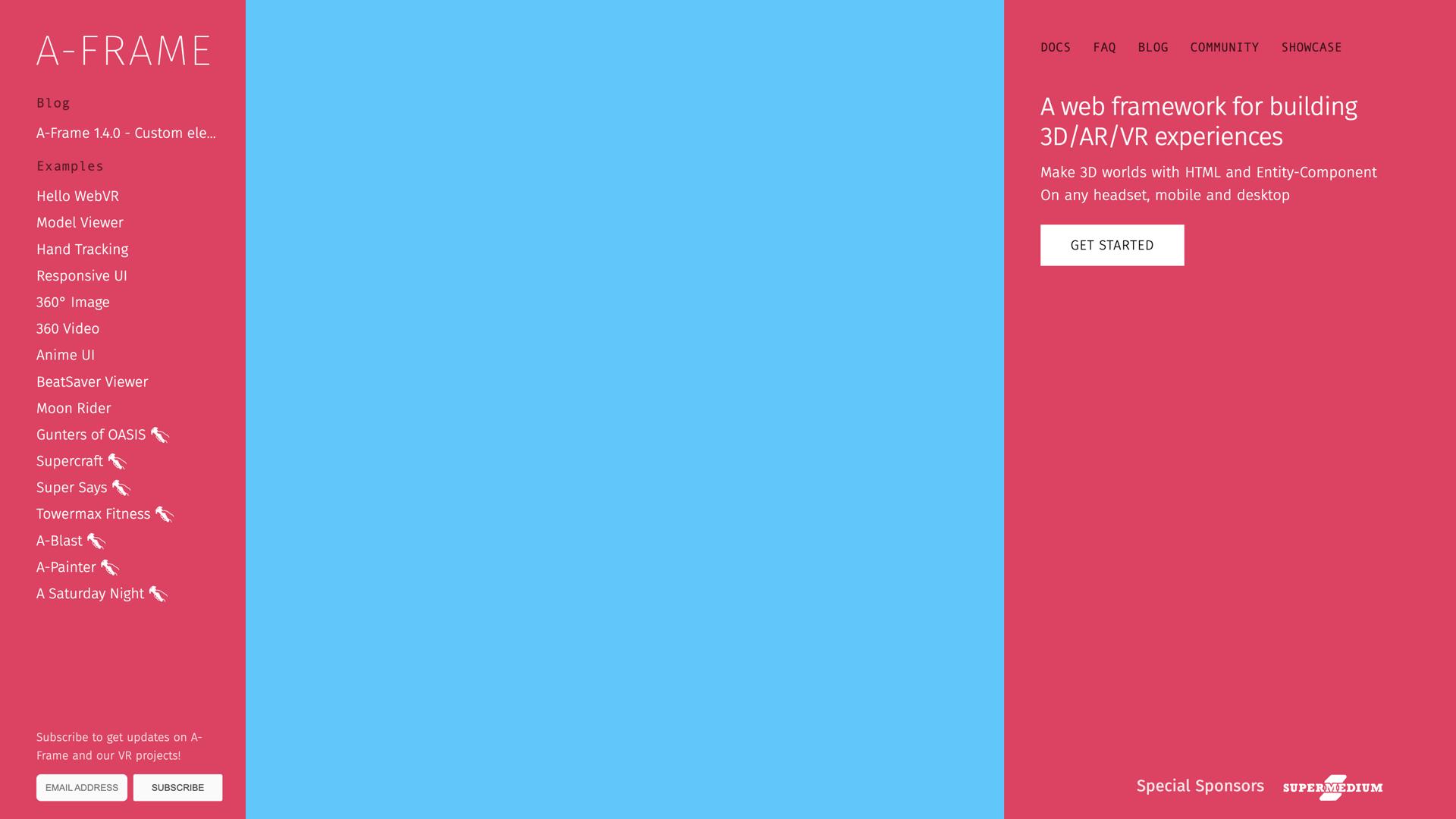A-Frame – Open-Source Web Framework for Building Virtual Reality Experiences
Introduction to A-FrameA-Frame is an open-source web framework that enables developers to create immersive virtual reality (VR) experiences directly in the browser. Built on top of HTML, A-Frame simplifies the process of building VR applications by providing an easy-to-use API and a set of powerful tools for creating 3D environments, interactions, and immersive content that works across a wide range of VR devices and platforms.
How A-Frame WorksA-Frame is designed to make VR development accessible to web developers. Using simple HTML-like syntax, developers can create 3D scenes, add interactive elements, and integrate VR content without the need for complex programming. A-Frame uses WebVR and WebXR to support a range of devices, including VR headsets, mobile phones, and desktop browsers, enabling users to access immersive VR experiences from any device.
- HTML-Based Syntax: Create VR content using familiar HTML tags.
- Cross-Platform Compatibility: Works across various VR devices, including Oculus, HTC Vive, and mobile VR platforms.
- WebXR Support: Supports modern web standards for VR, ensuring compatibility with the latest VR hardware.
- Integration with 3D Libraries: Seamlessly integrates with popular 3D libraries like Three.js.
A-Frame is an ideal solution for developers looking to build immersive VR experiences quickly and efficiently. Its simplicity, cross-platform support, and extensive ecosystem make it easy for anyone—from beginner to experienced developer—to start creating compelling VR content.
- Simplified VR Development: Build VR applications using simple HTML and JavaScript.
- Open-Source Framework: Free to use and continuously improved by a large community of contributors.
- Customizable Components: Extend functionality with custom components and features.
- Scalable VR Experiences: Create small, interactive environments or large, immersive worlds.
A-Frame offers an array of features that make VR development easier and more accessible for web developers.
- 3D Scene Creation: Quickly create and visualize 3D environments and objects.
- Interactive VR Components: Add interactive elements like buttons, links, and animations to VR scenes.
- Multi-Device Support: Create experiences that work across desktop, mobile, and VR headsets.
- Built-in Physics Engine: Supports physics-based interactions, making VR experiences more realistic.
A-Frame is suitable for developers, designers, and creators looking to build virtual reality experiences without a steep learning curve. Whether you're a novice or an expert, A-Frame provides the tools needed to create engaging VR environments.
- Web Developers: Create immersive VR content using familiar web technologies.
- Game Developers: Build interactive VR games and experiences using simple code.
- Educators: Develop VR educational content for more engaging learning experiences.
- Creative Professionals: Design virtual spaces, art installations, or VR-based experiences.
A-Frame lowers the barrier to entry for VR development by leveraging web standards and offering a simple, flexible platform. Its ease of use, combined with powerful features like physics, animation, and multi-device support, makes it an excellent choice for creating immersive VR experiences that are accessible to a wide range of users.
ConclusionA-Frame is revolutionizing the way VR experiences are created on the web. With its open-source, easy-to-learn framework, it empowers developers and creators to build immersive, interactive 3D environments that run directly in browsers. Whether you're looking to create games, simulations, or virtual tours, A-Frame provides the tools you need to make it happen—all with minimal coding and maximum impact.
